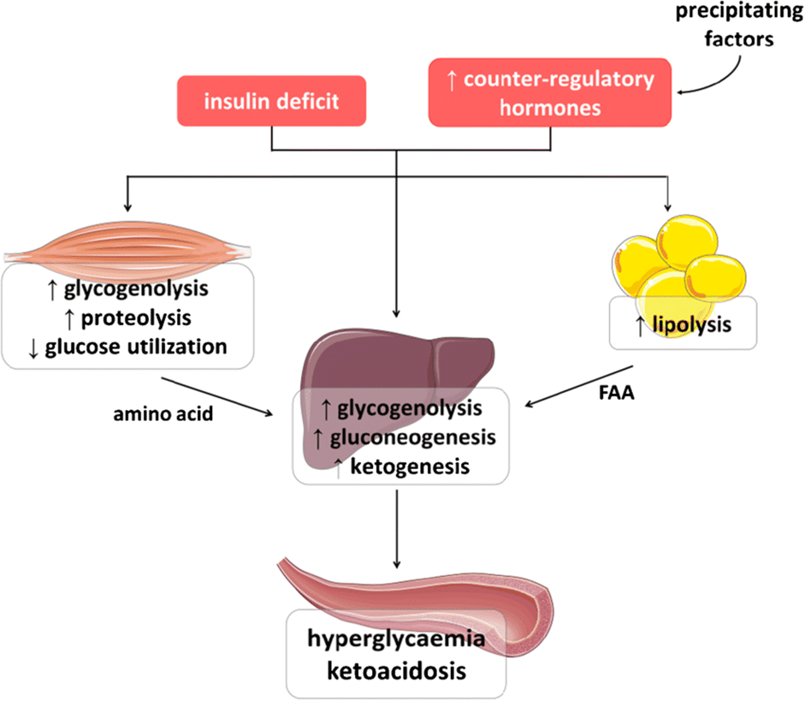Which describes the pathology of immune thrombocytopenia?
Diffuse fibrin deposition in the microvasculature
Deficiency in the production rate of globin chains
An excessive destruction of platelets
Bone marrow failure in which all elements are suppressed
The Correct Answer is C
The correct answer is c. An excessive destruction of platelets.
Choice A: Diffuse fibrin deposition in the microvasculature
Diffuse fibrin deposition in the microvasculature is not characteristic of immune thrombocytopenia (ITP). This description is more aligned with disseminated intravascular coagulation (DIC), a condition where widespread clotting occurs within the blood vessels, leading to multiple organ damage.
Choice B: Deficiency in the production rate of globin chains
A deficiency in the production rate of globin chains is associated with thalassemia, a genetic blood disorder that affects the production of hemoglobin. This is not related to the pathology of immune thrombocytopenia.
Choice C: An excessive destruction of platelets
An excessive destruction of platelets is the hallmark of immune thrombocytopenia (ITP). In ITP, the immune system mistakenly targets and destroys platelets, which are essential for blood clotting. This leads to a low platelet count and an increased risk of bleeding.
Choice D: Bone marrow failure in which all elements are suppressed
Bone marrow failure in which all elements are suppressed is characteristic of aplastic anemia, a condition where the bone marrow fails to produce sufficient blood cells. This is not related to immune thrombocytopenia.
Nursing Test Bank
Naxlex Comprehensive Predictor Exams
Related Questions
Correct Answer is C
Explanation
Choice A reason:
Foster self-care activities: Encouraging self-care activities is important for children with hemiplegic cerebral palsy as it promotes independence and self-esteem. However, it is not the highest priority compared to ensuring the child’s safety and accessibility in their home environment.
Choice B Reason:
Improve the child’s communication skills: Enhancing communication skills is crucial for the child’s social and emotional development. Effective communication can significantly improve the child’s quality of life. However, while important, it is not the most immediate priority compared to modifying the home environment for safety.
Choice C Reason:
Modify the home environment for safety and accessibility: Ensuring the home environment is safe and accessible is the top priority. Children with hemiplegic cerebral palsy may have mobility challenges, and a safe environment can prevent injuries and promote independence. This modification directly impacts the child’s daily life and overall well-being.
Choice D Reason:
Provide respite services for the parents: Offering respite services is beneficial for the parents’ mental and emotional health, allowing them to take breaks and recharge. While this is important, it is not the primary concern compared to the child’s immediate safety and accessibility needs.
Correct Answer is C
Explanation
Choice A reason:
Extracellular hyperglycemia refers to high blood sugar levels outside the cells. While hyperglycemia is a common feature of diabetic ketoacidosis (DKA), it is not the direct cause of the condition. DKA occurs when the body cannot use glucose for energy due to a lack of insulin, leading to the breakdown of fat and protein for energy, which produces ketones and causes acidosis.
Choice B Reason:
Hypoglycemia, or low blood sugar, is not associated with diabetic ketoacidosis. In fact, DKA is characterized by high blood sugar levels. Hypoglycemia is a separate condition that can occur in individuals with diabetes, particularly if they take too much insulin or skip meals.
Choice C Reason:
The use of fat and protein as an energy source is the primary mechanism behind diabetic ketoacidosis. When insulin is deficient, the body cannot utilize glucose for energy. As a result, it breaks down fat and protein to produce energy. This process generates ketones, which are acidic and lead to the development of ketoacidosis.

Choice D Reason:
Increased cellular metabolism of glucose is not related to diabetic ketoacidosis. In DKA, the problem is that cells cannot use glucose effectively due to a lack of insulin. Instead, the body resorts to breaking down fat and protein for energy, leading to the production of ketones and acidosis.
Whether you are a student looking to ace your exams or a practicing nurse seeking to enhance your expertise , our nursing education contents will empower you with the confidence and competence to make a difference in the lives of patients and become a respected leader in the healthcare field.
Visit Naxlex, invest in your future and unlock endless possibilities with our unparalleled nursing education contents today
Report Wrong Answer on the Current Question
Do you disagree with the answer? If yes, what is your expected answer? Explain.
Kindly be descriptive with the issue you are facing.
